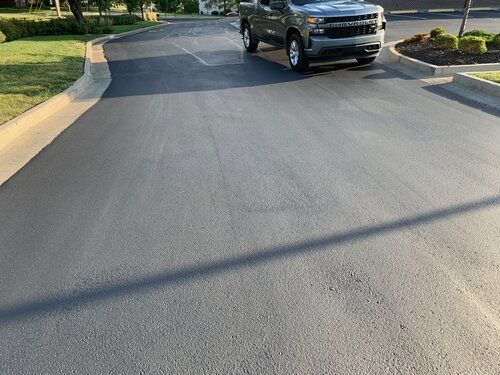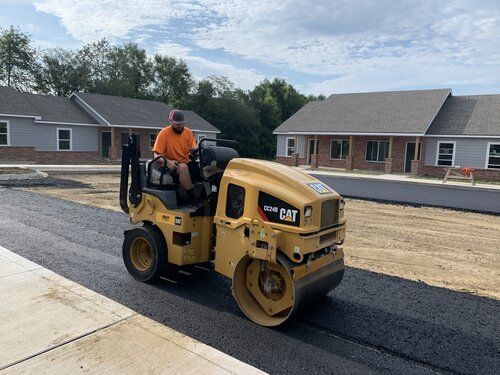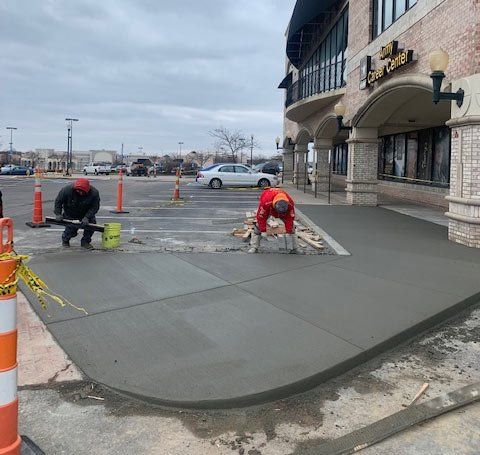Introduction
In the bustling world of commercial real estate, parking lots often serve as the first touchpoint for customers. A well-maintained and properly marked parking lot not only enhances the aesthetic appeal of a business but also ensures safety and compliance with local regulations. However, navigating zoning and regulation compliance in parking lot striping can be a daunting task for many property owners and managers. This article delves deep into the intricacies of parking lot striping, ensuring that you are equipped with all the knowledge necessary to stay compliant while optimizing your parking space.
Understanding Zoning Laws Related to Parking Lots
Zoning laws dictate how land can be used in various areas, influencing everything from building height to parking lot design. Understanding these laws is crucial for any property owner.
What Are Zoning Laws?
Zoning laws are regulations set by local governments that delineate how different areas of land can be utilized. They help ensure organized development, manage traffic flow, and maintain community standards.
Importance of Zoning in Parking Lot Design
Zoning laws affect the placement, size, and layout of parking lots. For instance, certain zones may require more extensive landscaping or specific materials for paving.
Common Zoning Regulations Impacting Parking Lots
- Setback Requirements: These dictate how far structures must be from property lines. Parking Space Ratios: Many municipalities require a specific number of parking spaces per square foot of business area. Landscaping Requirements: Some areas mandate green space within or around parking lots.
Local Ordinances Governing Parking Lot Striping
Local ordinances can significantly influence the design and maintenance of your parking lot striping.
Understanding Local Ordinances
Each city or county may have its own set of rules regarding how businesses should manage their parking facilities. Familiarizing yourself with these ordinances will help ensure compliance.
Common Local Ordinances Affecting Striping
ADA Compliance: The Americans with Disabilities Act (ADA) requires accessible spaces for individuals with disabilities. Fire Lane Regulations: Specific areas may need to remain clear for emergency vehicles. Directional Signage: Many municipalities have rules about how directional signage must be displayed.Navigating Zoning and Regulation Compliance in Parking Lot Striping
Navigating zoning and regulation compliance in parking lot striping involves understanding both federal laws like the ADA as well as local ordinances.
Step-by-Step Guide to Ensure Compliance
Research Local Regulations: Consult local government websites or offices to understand specific requirements. Hire Experienced Contractors: Work with asphalt companies experienced in local regulations. Plan Your Layout: Create a detailed plan that meets zoning requirements before starting any work. Obtain Necessary Permits: Before commencing work, make sure all required permits are secured.Benefits of Compliance
- Reduces liability risks Enhances customer satisfaction Streamlines operational processes
The Role of Asphalt Companies in Compliance
Partnering with reputable asphalt paving contractors can simplify the process of compliance.
Finding Reliable Asphalt Paving Contractors
Look for contractors who specialize in commercial paving services and have experience with zoning regulations.
Questions to Ask Potential Contractors
- Are you familiar with local zoning regulations? Can you provide examples of previous compliant projects? What is your approach to ensuring ADA-compliant parking lot striping?
Cost Considerations for Asphalt Paving Services
Understanding costs associated with asphalt paving services is vital for budgeting purposes.
Breakdown of Asphalt Paving Costs
| Service | Average Cost per Square Foot | |--------------------------------|------------------------------| | New Asphalt Driveway Installation | $3 - $6 | | Asphalt Resurfacing | $2 - $4 | | Sealcoating | $0.15 - $0.25 |
Factors Influencing Parking Lot Paving Costs
- Size of the area Condition of existing pavement Type of sealcoating used
Parking Lot Striping Services Overview
Parking lot striping services play a crucial role in maintaining organization within your parking area.
Essential Elements of Effective Striping
- Clear lane markings Appropriate signage Adequate spacing between vehicles
Types of Markings You May Need
Standard vehicle spaces Accessible spaces (ADA compliant) Fire lanesADA-Compliant Parking Lot Striping Essentials
Ensuring ADA compliance is not just a legal requirement; it fosters inclusivity.
Key Features of ADA-Compliant Striping
- Designated accessible spots must be wider than standard spaces. Placement must consider proximity to building entrances.
Asphalt Driveway Maintenance Tips for Longevity
Proper maintenance extends the life span of your asphalt driveway significantly.
Routine Maintenance Practices
Regular inspections Prompt crack sealing Scheduled sealcoating every few yearsSealcoating Benefits for Parking Lots
Sealcoating protects your investment by providing an additional layer against weather elements.
Why Sealcoat Your Parking Lot?
Protects against UV rays Prevents oxidation Extends pavement lifeHow Often Should You Restrip Your Parking Lot?
Regular restriping helps maintain visibility and safety in your parking area.
Recommended Restriping Frequency
Typically, every one to two years depending on usage levels and environmental factors.
Best Practices for Fire Lane and No-Parking Zone Striping
Fire lanes are critical for emergency access; ensuring they are clearly marked is essential for safety compliance.
Key Considerations
Use bold colors such as red or yellow. Ensure markings are visible from a distance.Choosing the Right Paint for Parking Lot Striping
Selecting asphalt sealcoating high-quality paint can make all the difference when it comes to durability and visibility.
Paint Options Available
Water-based paints offer easy application but might wear quicker. Solvent-based paints provide durability but come with environmental concerns.Custom Parking Lot Numbering & Lettering Solutions
Custom numbering helps organize large lots effectively while enhancing navigability for visitors.
Importance Of Custom Markings
They provide clarity regarding designated spaces, improving overall customer experience while preventing disputes over space allocation.
FAQs About Navigating Zoning Regulations in Parking Lots
What should I check before starting my striping project? Always verify local zoning laws related to commercial properties before commencing work on striping projects.

How do I know if my current layout is compliant? You can consult local zoning codes or hire an expert familiar with municipal regulations to assess your layout’s compliance status.
Are there penalties for non-compliance? Yes, failing to comply could result in fines or even forced removal/restriping at additional costs.
What does ADA-compliant mean? It means ensuring accessibility features meet specific guidelines outlined by the Americans with Disabilities Act (ADA).
How often should I perform maintenance on my asphalt surface? Regular inspections should occur bi-annually; however, sealcoating should ideally happen every two years depending on wear and tear conditions.

What’s involved in obtaining permits for commercial paving? This often requires submitting plans showing intended use alongside any modifications necessary according to city standards which may vary significantly by location; always consult local authorities early!
Conclusion
Navigating zoning and regulation compliance in parking lot striping doesn’t have to feel overwhelming if approached methodically—understanding local laws coupled with engaging knowledgeable professionals sets you up for success! With proper planning, maintenance strategies like regular sealcoating sessions combined harmoniously alongside effective design principles ensure maximum functionality while adhering strictly towards mandated standards—ultimately leading towards enhanced user experiences throughout! So don’t hesitate; start laying down those stripes today!
